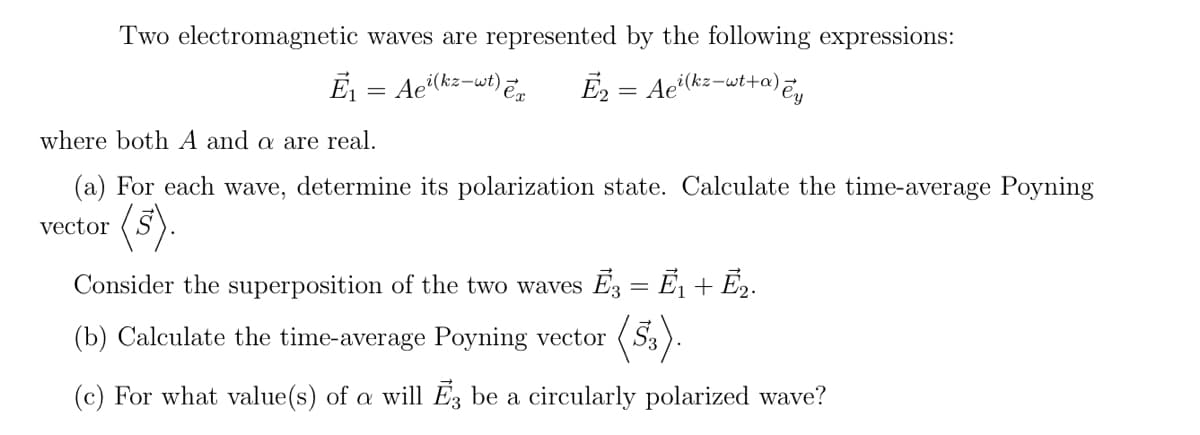Two electromagnetic waves are represented by the following expressions: E = Ae(k=-wt) E Ē2 = Ae"(kz-wt+a)E, where both A and a are real. (a) For each wave, determine its polarization state. Calculate the time-average Poyning (5). vector Consider the superposition of the two waves E3 = E1 + E2. (b) Calculate the time-average Poyning vector (5.). (c) For what value(s) of a will E, be a circularly polarized wave?
Two electromagnetic waves are represented by the following expressions: E = Ae(k=-wt) E Ē2 = Ae"(kz-wt+a)E, where both A and a are real. (a) For each wave, determine its polarization state. Calculate the time-average Poyning (5). vector Consider the superposition of the two waves E3 = E1 + E2. (b) Calculate the time-average Poyning vector (5.). (c) For what value(s) of a will E, be a circularly polarized wave?
Related questions
Question

Transcribed Image Text:Two electromagnetic waves are represented by the following expressions:
E = Ae(k=-wt) En
Ē2 = Ae"(kz-wt+a),
where both A and a are real.
(a) For each wave, determine its polarization state. Calculate the time-average Poyning
(s).
vector
Consider the superposition of the two waves E3 = E1 + E2.
(b) Calculate the time-average Poyning vector
(5.).
(c) For what value(s) of a will E, be a circularly polarized wave?
Expert Solution
This question has been solved!
Explore an expertly crafted, step-by-step solution for a thorough understanding of key concepts.
This is a popular solution!
Trending now
This is a popular solution!
Step by step
Solved in 2 steps with 2 images
